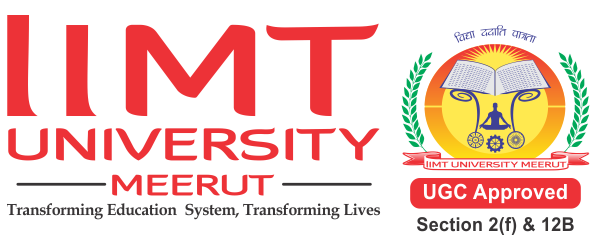Introduction
Choosing between an engineering diploma and B.Tech after 12th is a crucial step for aspirants aiming for technical careers. With the rising demand for skilled engineers, private engineering universities in India offer robust programs. This guide will help prospects understand the differences, benefits, and which pathway aligns with their career goals.
Engineering Diploma Course
What Is an Engineering Diploma?
Engineering diploma courses are skill-centric programs focused on core technical and practical training. Typically lasting 2 to 3 years, they admit students after 10th or 12th, and cover disciplines like Civil, Mechanical, Computer Science, and Electrical Engineering.
Highlights of IIMT University’s Diploma Offerings
-
Disciplines: Civil, Mechanical, Electrical, Computer Science, Automobile, and Production Engineering.
-
Course Duration: 3 years (regular diploma), 2 years (lateral entry).
-
Curriculum: Emphasis on hands-on training, labs, CAD/CAM modules, internships, and industry projects. Outlined by expert faculty and supported by modern facilities.
-
Career Prospects: Graduates can join entry-level jobs as junior engineers, technicians, maintenance supervisors or leverage lateral entry for B.Tech programs.
-
Eligibility: 12th with PCM or equivalent. ITI holders can apply for lateral entry.
-
Placement Support: Fast-track entry to private polytechnic college job roles and technical branches.
B.Tech Program
Advantages of B.Tech Degrees
B.Tech—Bachelor of Technology—is a 4-year undergraduate degree that blends engineering theory, application development and advanced project work. B.Tech programs impart both depth and breadth of knowledge, preparing students for specialized fields, high-growth jobs and advanced studies.
Key Features at IIMT University
-
Specializations: Computer Science, Civil, Mechanical, Electrical & Electronics, IT, Aerospace, Artificial Intelligence & Machine Learning.
-
Course Duration: 4 years (standard B.Tech); 3 years (lateral entry).
-
Eligibility: 12th (PCM) with 50% marks. Admission based on JEE Main, CUET, UPTAC and other entrance scores.
-
Learning Approach: Intensive classroom studies, labs, workshops, industry internships, hackathons, and collaborative projects.
-
Career Impact: B.Tech graduates land roles as design engineers, software developers, project managers, and can pursue M.Tech, MBA, or research careers.
-
Placement: Top recruiters from IT, automotive, manufacturing, telecom, and public sectors visit for campus placements.
Engineering Diploma vs. B.Tech – Critical Differences
| Aspect | Engineering Diploma Courses | B.Tech Degree (Bachelor of Technology) |
|---|---|---|
| Offered at | Private Polytechnic College | Top Private BTech Colleges in India |
| Duration | 2-3 years (after 10th or 12th) | 4 years (after 12th) |
| Entry Criteria | 10th/12th (PCM/ITI/Lateral Entry) | 12th (PCM) with entrance test (JEE/CUET) |
| Curriculum Focus | Practical, skill-based | In-depth theoretical + practical |
| Career Outcomes | Technician, Supervisor, Junior Engineer | Design Engineer, Developer, Manager, Research |
| Upward Mobility | Lateral entry to B.Tech | Eligible for M.Tech, MBA, PhD |
| Placement Potential | Entry-level roles, quick workforce access | Broad career scope, higher salary, campus recruitment |
| Cost | Lower tuition, shorter course | Higher investment, longer duration |
How to Choose the Right Path After 12th?
-
If immediate job-readiness and affordability are priorities:
Engineering diploma programs are excellent for students who want to enter the workforce early. -
If career growth, specialization, and research interest matter:
B.Tech is suited for those aiming for advanced engineering jobs, management, or higher studies.
Consider your personal strengths, career ambitions, financial circumstances, and readiness for rigorous academics or hands-on work.
IIMT University – Top Ranking University in India
IIMT University in Meerut is recognized among top private engineering universities in India for both diploma and B.Tech programs. With extensive labs, expert faculty, industrial training, and a proven placement record, it positions students for success whether they choose engineering diploma courses or B.Tech.
Admissions: Process for Diploma and B.Tech at IIMT University
-
Step 1: Apply online at IIMT University’s official website or visit campus for offline registration.
-
Step 2: Submit required documents (mark sheets, photo ID, application form).
-
Step 3: Admissions for both tracks involve entrance assessments, personal interviews, and may use CUET, JEE, and merit criteria for selection.
-
Step 4: For final admission, receive acceptance, verify credentials, and pay the program fees.
-
Scholarships: IIMT offers merit-based and need-based scholarships for eligible students.
FAQs
Q1. Can a diploma holder join B.Tech later?
Yes, IIMT University offers lateral entry for diploma holders into the 2nd year of B.Tech programs.
Q2. What are the placement prospects after a diploma or B.Tech?
Diploma graduates find technician-level jobs, while B.Tech graduates access a much broader and well-paid job market including managerial and R&D roles.
Q3. Which engineering specializations are popular at IIMT University?
Civil, Mechanical, Computer Science, Electrical, IT, and more at both diploma and B.Tech levels.
Conclusion
Choosing between engineering diploma and B.Tech depends on career priorities, academic interests, and financial factors. Private engineering universities in India like IIMT University offer both pathways, enabling students to build successful careers in industry, technology, research or academia.
Explore diploma and B.Tech admissions at IIMT—your gateway to a rewarding technical future at a top ranking university in India.













